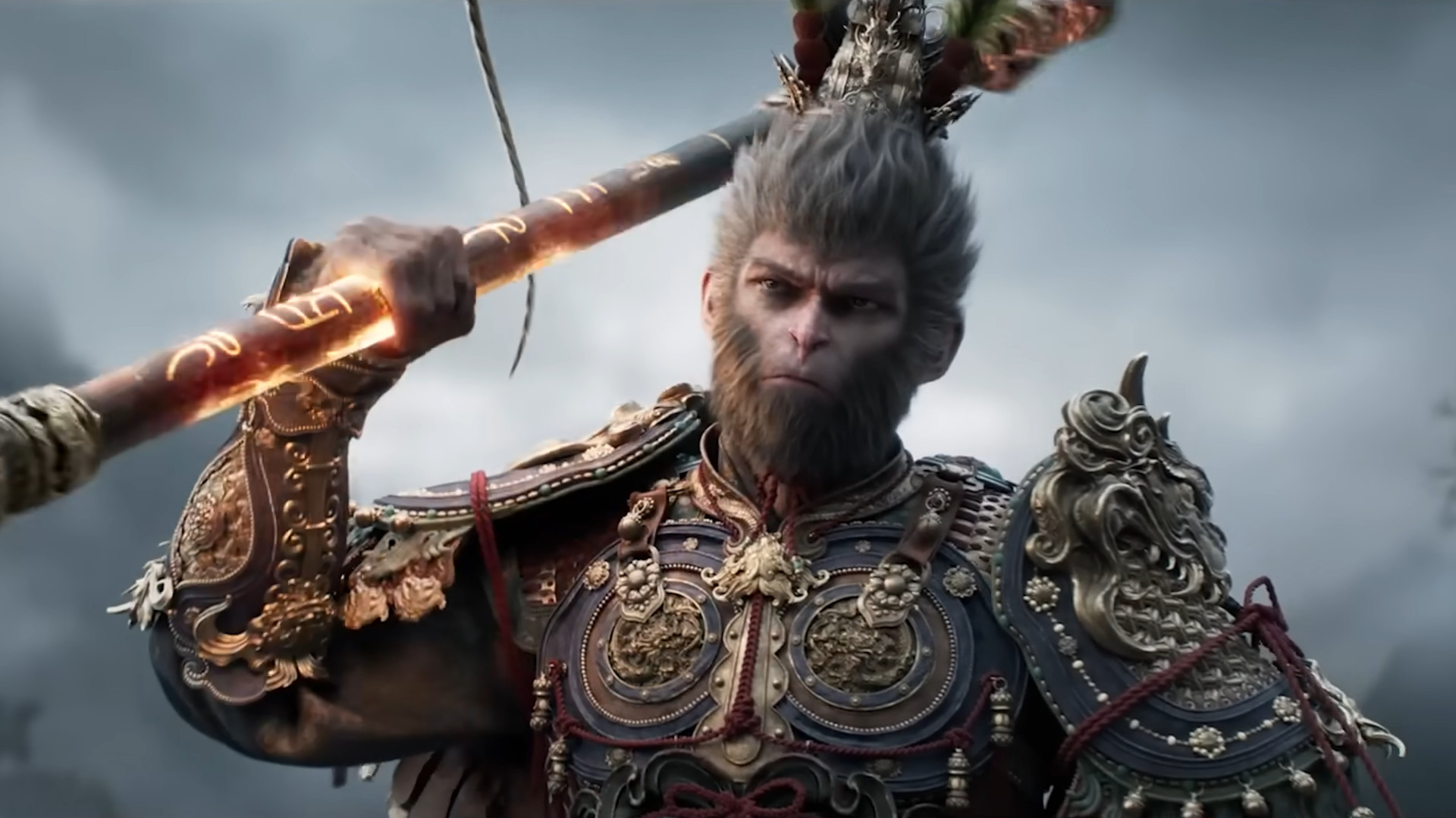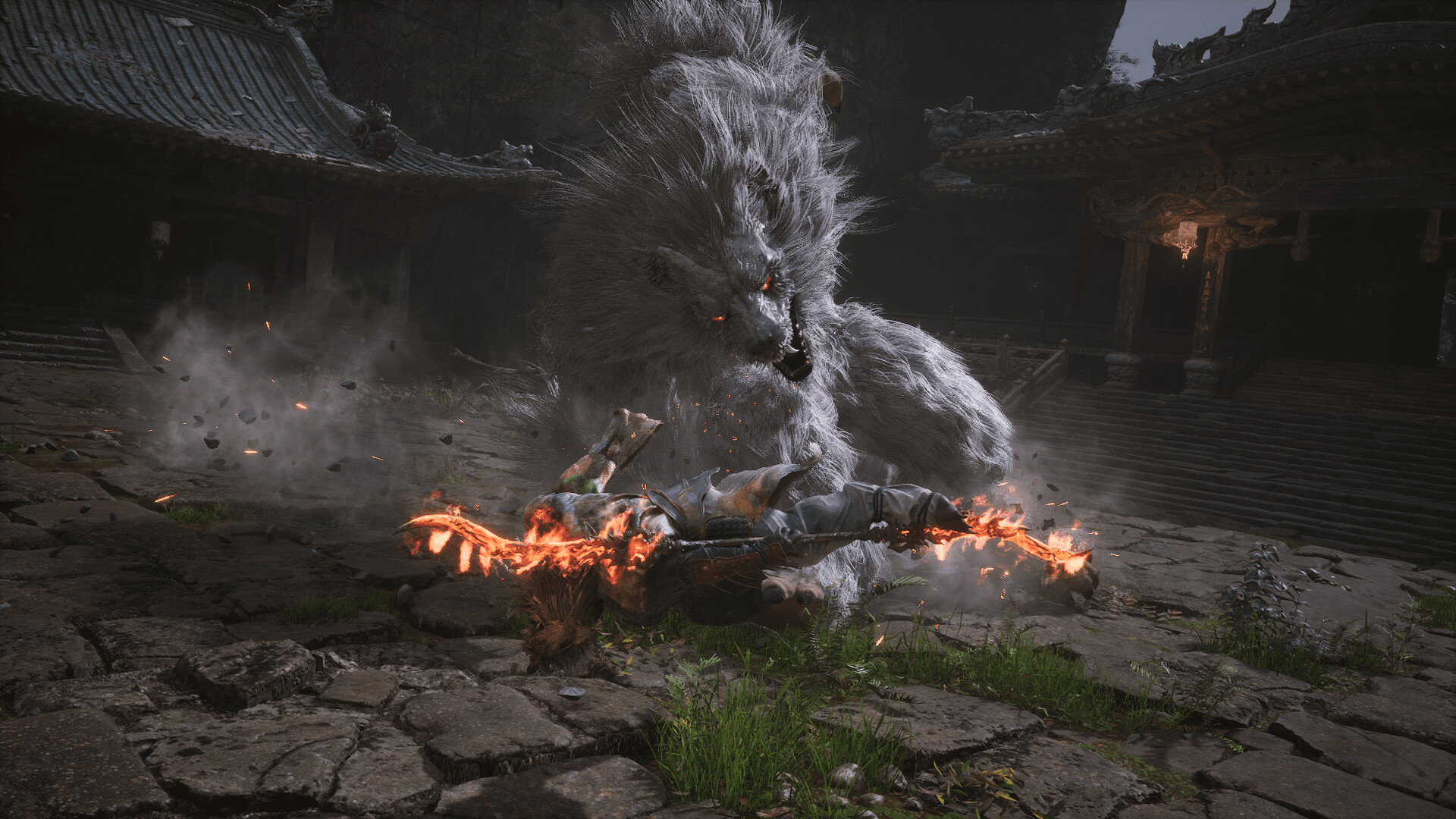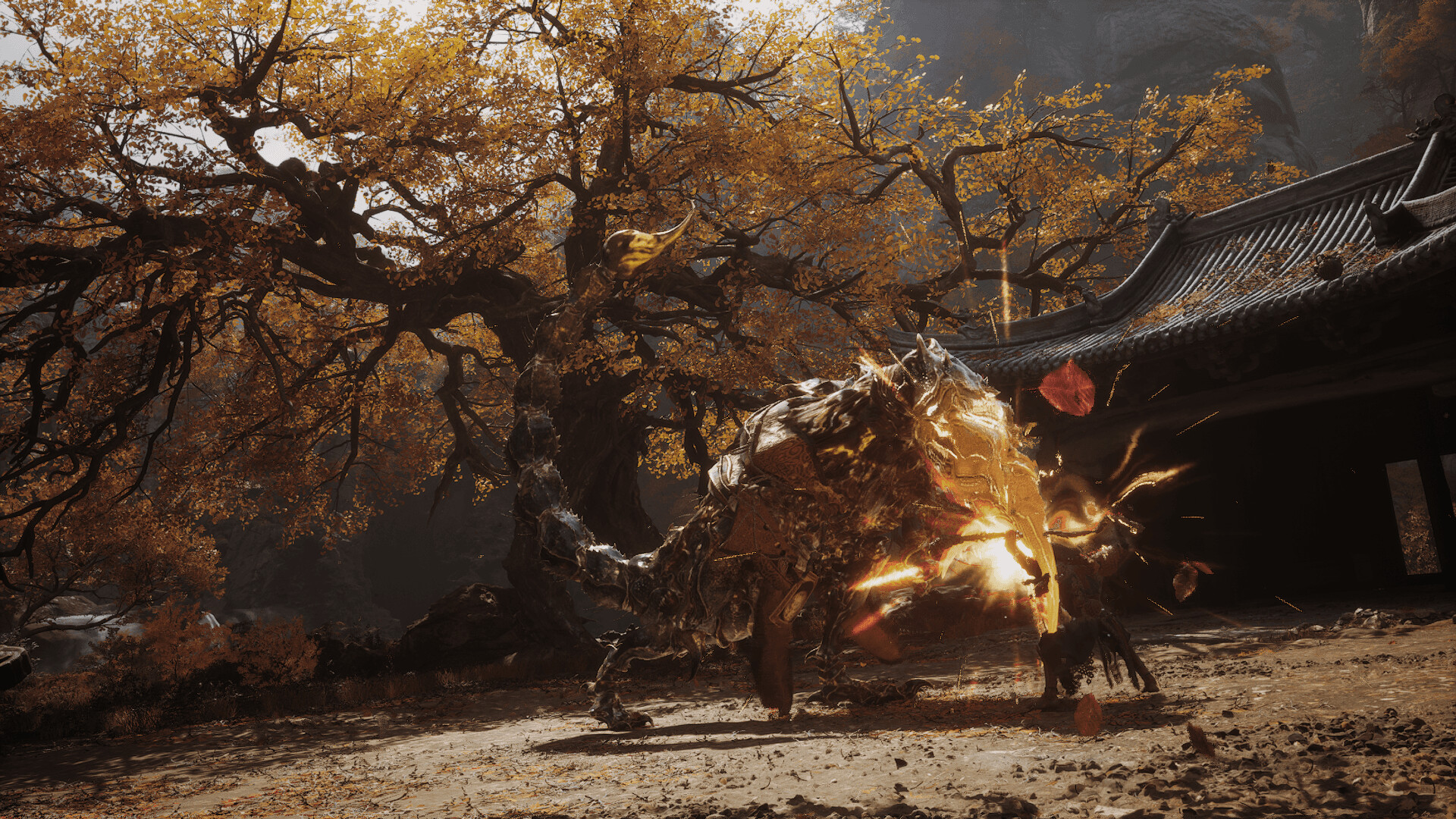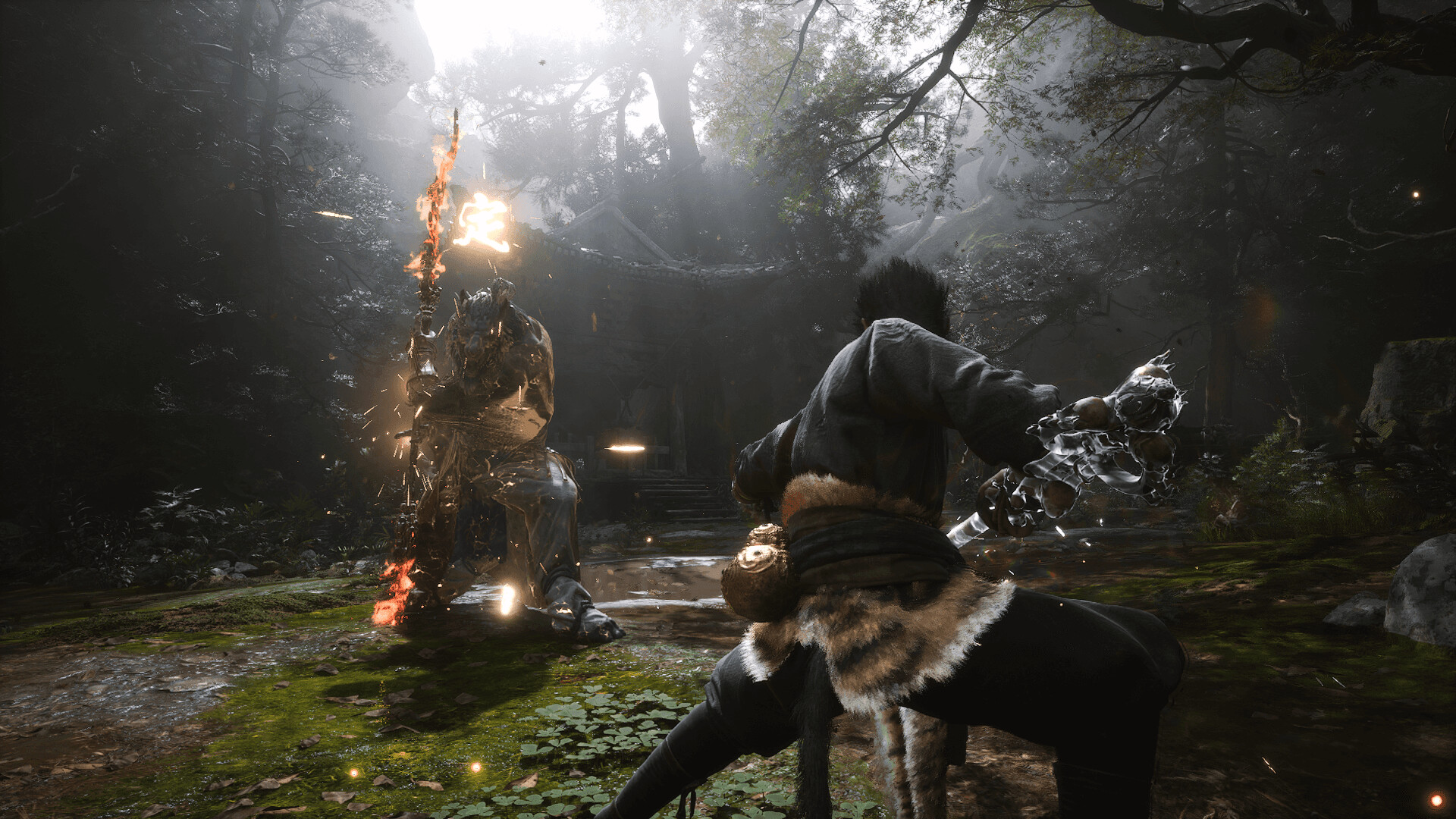
We have some real souls game freaks here at PC Gamer, several of whom are deep in Shadow of the Erdtree preparation mode, but I'm not one of them. I like From's style of action RPG, but I like to believe I represent the everyman's experience with them—bumbling through the opening hours, just barely beating bosses on a respectable ninth attempt, often quitting in the final act where things get really tough and promising myself I'll get back to it (I don't get back to it). Maybe that's cope talking and I'm just not built for the souls life, but I do know that Black Myth: Wukong is way more my speed than Elden Ring.
If you're not one of the many soulslike fans who've rocketed Black Myth: Wukong to the top of Steam's most-wishlisted games, then you've probably seen it in passing. It's an action RPG loosely adapting the 15th-century novel Journey to the West (the latest of many adaptations, including Enslaved: Odyssey to the West). You play as the monkey king himself, Sun Wukong, taking on the world with his magic staff. It's only the second game by indie outfit Game Science, founded in 2014 by ex-Tencent devs. You might remember Game Science as the subject of a 2023 IGN report detailing a history of sexism from one of its founders as well as a wider company culture of misogyny.
My two hour demo at Summer Game Fest, which was the first time Black Myth: Wukong has been playable, centered around the Black Wind Mountain, an early area in the game adapted from a chapter of the same name. I'm not familiar with author Wu Chen'en's original vision of Black Wind Mountain, but Game Science's rendering is stuffed with wolflike henchmen, big-headed golem babies, and a gauntlet of challenging bosses.
Even as I steered Wukong toward a dozen early deaths, none of the handful of boss fights I found made me want to chuck the controller across Los Angeles—maybe because it was easy to dust myself off and try again when I never woke up more than 15 or 20 seconds away from where I died. Wukong's streamlined moveset reinforced my patience, too. Combat is narrowly focused on a single weapon, the monkey king's magical staff, a dodge button, and quick-use spells with cooldowns. It's closest to Sekiro and Bloodborne in this way, and yet there's no block or parry (at least not early on).
Two hours isn't enough time to get a full read on what seems like a pretty big game, but some key facts souls likers will want to know:
- Wukong's staff is his sole weapon
- Boss fights are most of the game (at least so far)
- The spaces between bosses are small, and not particularly exciting
- Wukong heals with a single flask limited by uses
- Black Myth has a traditional combo system, with later moves executed by linking heavy attacks into light combos
That combo system may prove to be the standout feature of Wukong's combat. It's not as simple as mixing light and heavy attacks. Landing light attacks builds up Focus points (name subject to change, according to Game Science)—I could bank up to two at a time in the demo, but I imagine it's upgradeable. Using heavy attacks consumes Focus, but if you're out of points, heavy attacks can still be triggered in a pinch by charging them up first.

Boss rush
I rushed into the first major boss fight of the demo, a wolfman named Guangzhi with a double-tipped flame spear, hoping my improvised strategy of "spam charged heavy attacks" would carry me through. Guangzhi immediately sized up my freshman tactics and cut me down to size with arena-crossing slash-dashes.
I'd died a handful of times before the patient Game Science dev to my right suggested I focus on light attacks, and unlock an early move on the skill tree that introduces heavy attacks into Wukong's light combo. It was a night and day improvement. Light attacks whittled Guangzhi's health bar down pathetically slowly, but I was finally getting consistent hits in and, crucially, never committing to an attack with a long animation I couldn't cancel into a dodge. Every other light combo generated a Focus point that I could immediately turn into a heavy hit with a long-range (thanks to the extendo-staff) overhead slam that never failed to stagger its target.
Guangzhi immediately sized up my freshman tactics and cut me down to size with arena-crossing slash-dashes.
Guangzhi still dropped me a few more times after that before I put him away for good, but I walked away from the fight with an understanding of what will and won't work in Black Myth, and which Souls series habits I'd have to leave at the door. I learned light attacks were just a means to farm Focus, and that Black Myth's combat economy is all about banking Focus points and cashing them in as soon as possible. I also walked away with Guangzhi himself, or rather, the power to transform into the wolf beast and swing his fire spear.
Shapeshifting and spellcasting completes Wukong's bag of tricks. Shapeshift forms are super powerful, but Wukong can only hold a form for a minute or two, or even less if he takes too many hits. In Guangzhi mode, I inherited his long-reaching dash attack as well as an ultimate finisher that only unlocks after connecting a handful of blows. I got the feeling shapeshifting is meant as a boss fight tool—whipping out Guangzhi on a group of fodder goons was like squaring up a squadron of snails with a tank. Plus, the cooldown on the Guangzhi form was long enough that it made sense to treat it more like a "break glass in case of serious beatdown" panic button.

Size up
And I did panic, a lot. I don't know if this is Game Science's intention, but I was constantly on the backfoot in Black Myth. Beyond the one transformation afforded per fight, I didn't have many offensive options beyond what I could do with my staff. My sole spell for most of the demo was another form of "oh crap" button—an "Immobilize" spell that locks targets in place for a few precious seconds. Sometimes I spent those seconds pounding mercilessly away at an extra inch of health bar, but more often I needed the reprieve to safely sip Wukong's restorative booze.
More than action RPGs like it, Black Myth is a game about running away. When I'd exhausted my mana, the only thing between me and a trip back to the respawn shrine was the B button—dodge, dodge, roll, dodge, roll. A perfectly timed dodge (signaled by Wukong moving so fast he leaves an afterimage) creates openings for combos, but even Black Myth's early bosses loved to change up their timing just as I'd tuned my thumb to their rhythm. Bosses also do this "fun" thing where they barely telegraph their strongest attacks, all but ensuring learning attack patterns comes with a blood cost.
The spaces between boss fights will be the lowlights of Black Myth.
I expected Black Myth's strict doding policy to bother me more. I used Sekiro's block button as a crutch throughout the whole game. My FromSoftware resume is padded with ranged wizards and sword-and-board bros who think dodging is for cowards. After a few particularly cheap deaths, I wondered if Black Myth isn't missing something extra to help with defense—a block, teleport, even that joke shield from Bloodborne.
These games are hard enough without cutting out blocking entirely, but Black Myth makes its case well for an agility-only approach. You can sort of block in the sense that some attacks interrupt enemy combos, and I think the window for dodging is often larger than it seems. I don't have the footage to look back on, but I swear one time, I successfully rolled out of an attack after it'd already connected.

A short hike
I haven't said as much about the world surrounding Black Myth's boss fights because there's not much to say. Black Wind Mountain is a gorgeous space—convincingly dense with vegetation and tree cover—but you can look much farther than you can actually go. Black Myth's world, or at least this early area, is best described as a network of hiking trails, narrow and deliberate, flanked on all sides by invisible walls. Even places I thought for sure I could reach, like behind a low barrier of rocks and bushes, were walls in disguise. I didn't feel pushed down one particular path, but every route was essentially a funnel of fodder that led to a prize—a treasure chest, upgrade material, or sometimes an optional miniboss.
Game Science is obviously working at a much smaller scale than Elden Ring, but I was surprised not to find any signs of an interconnected world begging to be picked apart. Wukong can jump, but I failed to find a single use for it outside combat. The Black Wind Forest is fairly flat, and the areas I scoured were straightforward and sparse.
I suspect that means the spaces between boss fights will be the lowlights of Black Myth—a bummer for those who were hoping for a "proper" soulslike out of Wukong—but that has its advantages, too. Again, those sparse funnels of enemies are really easy to run past on your way to a boss fight. As far as I can tell, Black Myth is one long boss rush. No fuss, all fight. I can get behind that.







